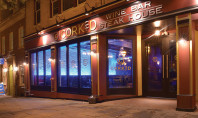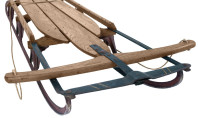Wilson Borough

Wilson Borough’s roots go back to 1912, when area residents first talked about creating a separate community out of a portion of Palmer Township. That year, New Jersey Governor Woodrow Wilson was challenging incumbent William Howard Taft in the presidential election. The residents decided that their new community would be named after whoever won. So when Woodrow Wilson went on to become the nation’s 28th President, “Wilson” got its name.
Two years later, in 1914, Wilson was officially incorporated as a township. Although geographically small (just over one square mile), it was considered by many to be an attractive place to live. Land was sold at reasonable prices, and neighborhoods quickly sprung up. In some instances, the development was so rapid that the houses were completed before the connecting roads were in place.
By the end of the 1910s, Wilson’s population had soared from less than 1,500 to more than 6,000 people. As a result of this tremendous growth, community leaders began appealing to change from a township to a borough form of government. Petitions were circulated in early 1920, and by July the new status was finalized: Wilson Borough came into being.
The following year, the 80,000 square foot Dixie Cup plant, located on a six-acre plot of land off 24th Street, opened for operations. Dixie, which moved to Wilson from New York City in order to expand production, would become one of the borough’s largest and most significant employers. For many people, however, its most memorable feature was the giant Dixie Cup that sat atop the factory’s roof and was visible to cars passing by on Route 22. The cup, which was really a 55,000-gallon water tank, gave Wilson Borough the distinction of being “Home to the World’s Largest Dixie Cup” for more than sixty years.
Throughout the 1920s and 30s, Wilson’s population continued to grow, prompting the borough to upgrade and expand many of its public facilities. By 1923, the borough’s Junior High (grades 7, 8 and 9) and Senior High (grades 10, 11 and 12) had become so overcrowded that classes were split between four separate buildings – the Hay Building at 19th Street and Hay Terrace, the Liberty Building at 24th and Birch Streets, the Fairview Building at 18th and Ferry Streets, and an unnamed two-room building on Avona Heights. To help alleviate this problem, construction of a new high school at Washington Boulevard and 24th Street began in the fall of 1924. At a total cost of approximately $240,000, this new school featured twenty-four “modern classrooms” as well as a gymnasium and auditorium.
In 1930, Easton Hospital moved from its original location on Wolf Street in Easton to its present location on South 21st Street in Wilson Borough. This new facility would be expanded over the following decades to include, among other things, a West Wing (completed in 1953) and an East Wing (completed in 1964). Frederick Meuser, one of the borough’s wealthiest residents and a trustee of the hospital throughout the 1940s, donated thousands of dollars to help pay for the hospital’s upgrades. Today, Easton Hospital’s Meuser Building (located on the corner of Lehigh and 20th Streets) pays tribute to
his contributions.
A prominent land developer and community leader, Frederick Meuser helped shape Wilson Borough in several significant ways. In addition to supporting the hospital, Meuser also donated the large tract of land that would become Wilson’s Meuser Park. Upon his death in 1960, he bequeathed the majority of his $500,000 estate to the borough for philanthropic activities and community trust funds. As requested in Meuser’s will, his home – a beautiful brick mansion located at 1803 Northampton Street – was opened in 1962 as the Mary Meuser Memorial Library, named in honor of his late wife.
Today, Wilson Borough is home to just under 8,000 residents. Although the Dixie Cup plant is no longer in operation, and the schools have once again been rebuilt to include the current high school (completed in 1994), an intermediate school and three elementary schools, elements of the borough’s past are still visible. The Mary Meuser Memorial Library remains open to the public (and considered by many to be a “jewel” of the community), while Meuser Park plays host to a variety of annual borough events.
Historic Sites & Notable Facts:
• In 1855 Northampton County’s first fair and cattle show was held in present-day Wilson Borough near the southwest corner of 15th and Butler Streets.
• At the start of the Civil War, Wilson was home to “Camp Washington”, which briefly housed the Rhode Island Marine Artillery, commanded by Colonel Ambrose E. Burnside. Burnside, who was later defeated at the Battle of Fredericksburg in 1862, is most often remembered for his distinctive style of facial hair, which gave rise to the term “sideburns”.
• Wilson Borough is home to a 150-year-old Civil War cannon. The cannon, known as a “Parrott gun” is thought to be one of only 677 produced during the war. In the early 1910s, it was placed at the site of Camp Washington by members of the Grand Army of the Republic as a memorial for Civil War veterans. Today it is displayed at the corner of Washington Boulevard and 17th Street.
• The borough’s first – and only – movie theater opened its doors in May of 1921. Located at 1709 Washington Boulevard, the Wil-Bor Theater operated until approximately 1945. After closing, the theater briefly became a roller rink. Today, the building is home to Miss Pat’s Stage Door Studio (formerly known as Miss Pat’s School of Dance).















